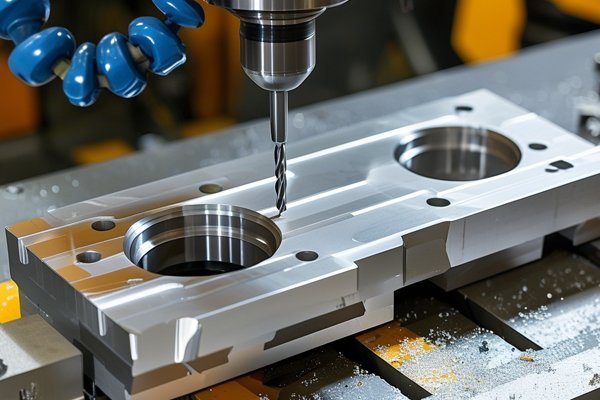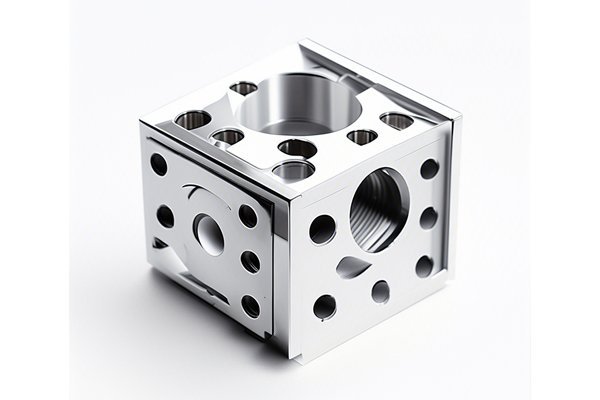—
Did you know that CNC (Computer Numerical Control) machining offers precision levels of up to 0.0001 inches? This incredibly tight tolerance is crucial for various industries, from aerospace to medical devices, where even the slightest error could lead to catastrophic failures. As manufacturing needs evolve, many organizations find themselves grappling with the question: “Can CNC machining manufacturers handle large and complex parts for my projects?” The answer is multifaceted and requires a deep dive into the world of CNC machining, its capabilities, and the various sectors where these technologies are utilized.
In this extensive guide, we’ll explore the feasibility of manufacturing large and complex components using CNC machining, the challenges involved, and effective solutions that manufacturers have developed.
—
—
CNC machining is a subtractive manufacturing process that operates using computer-controlled machines, which can perfectly execute a series of commands to cut, mill, or shape raw materials. Commonly used materials include metals, plastics, and wood. The entire process is automated, allowing for uniform production while minimizing human error.
With advancements in technology, industries such as aerospace, automotive, and telecommunications are increasingly demanding large components with intricate geometries. These parts often serve critical functions and must meet strict quality standards, making CNC machining a preferred choice for many manufacturers.
While CNC machining presents many advantages, it also comes with its own set of challenges, especially when dealing with large and complex parts.
3.1 Design Constraints
Designing for CNC machining requires an understanding of the technical limitations of the machines. Complex designs can lead to difficulties in producing the part accurately.
3.2 Material Limitations
Not all materials can withstand the rigors of CNC machining, particularly when creating larger parts. Engineers and designers must carefully select materials that meet both functional and machinability criteria.
3.3 Machine Size and Capability

Currently, there are limitations on the maximum size of parts that can be machined, restricted primarily by the machine’s dimensions and capabilities. Manufacturers must invest in specialized equipment for larger components.
3.4 Production Time and Costs
Larger and more complex parts often require more time to manufacture, leading to increased costs. Budget constraints can limit design possibilities, which is a hurdle that most manufacturers face.
To tackle these challenges, several effective strategies and techniques have emerged in the CNC machining industry.
4.1 Advanced CNC Technologies
The introduction of larger and more advanced CNC machines makes it possible to produce larger components with exceptional accuracy. Innovations such as multi-axis machining allow manufacturers to create complex geometries efficiently.
4.2 Design for Manufacturability (DFM)
Adopting DFM practices can significantly improve the manufacturability of complex parts, ensuring that designs align with machine capabilities and material constraints.
4.3 Hybrid Manufacturing Techniques
Combining additive manufacturing (3D printing) with traditional CNC machining allows fabricators to produce larger, complex parts in a more efficient manner. This hybrid approach is increasingly gaining traction in various industries.
4.4 Real-Time Monitoring and Data Analysis
Integrating real-time monitoring into the machining process provides insights into production status, aiding in the timely identification of errors or inefficiencies and allowing for quick corrections.
Examining real-world applications can provide deeper insights into the efficacy of CNC machining for large components. Several case studies reveal successful implementation strategies, technologies used, and lessons learned.
As technology continues to advance, the future of CNC machining looks promising. We expect machine capabilities to expand, materials to become more versatile, and design methodologies to evolve, allowing manufacturers to produce even larger and more complex components.
Trends to Watch:
In summary, CNC machining manufacturers are well-equipped to handle large and complex parts, but doing so requires overcoming various challenges related to design, materials, machinery, and production. By adopting advanced technologies, utilizing Design for Manufacturability principles, and employing hybrid manufacturing techniques, manufacturers can produce high-quality components efficiently.
Understanding these processes is vital for businesses looking to innovate and remain competitive in their respective industries. As the demand for precision parts continues to grow, CNC machining will undoubtedly play a pivotal role in shaping the future of manufacturing.
Remember, the ability to produce large and complex parts is not just about having the right tools—it’s about understanding the complete ecosystem of design, material science, and technological advancement. By applying the insights gathered in this blog, you can make informed decisions that will ultimately benefit your projects and help you achieve your manufacturing goals.
—






